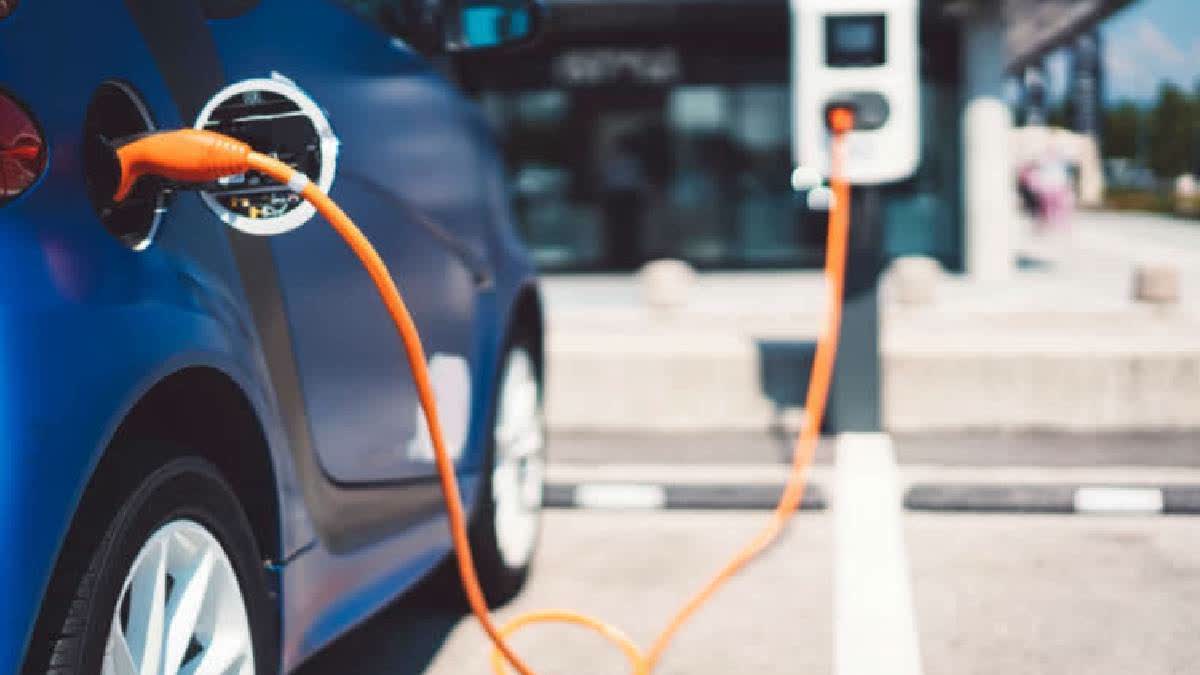Hyderabad: Electric vehicle (EV) adoption in India, though increasing, is still in the early stages of development. The growth in this sector has been significantly driven by direct purchase incentives from both the FAME (Faster Adoption and Manufacturing of Electric Vehicles) scheme and state-level subsidies.
As on November 2023, data from the OMI Foundation's EV-Ready India dashboard reveals that EV adoption in India is approximately 5% meaning for every 100 vehicles registered in India, 5 are EVs. The lead in adoption rates is taken by the three-wheeler passenger segment at 50.91%, followed by goods carriers at 32.84%, two-wheelers at 3.99%, and cars at a modest 1.57%.
A significant observation in the two-wheeler segment this year shows a decrease in adoption from 7.14% in May 2023 to 3.99% in November 2023, a trend that seems to align with the reduction of FAME subsidies starting in June. This pattern highlights the essential role subsidies play in boosting EV adoption.
However, it's important to note that the high adoption in the three-wheeler segment is largely attributed to the proliferation of low-cost e-rickshaws, which are relatively affordable compared to their traditional counterparts and their adoption is less influenced by subsidies.
On the other hand, the lower adoption rates in two-wheelers and cars can be linked to the fact that even with subsidies, these vehicles have not reached total cost of ownership (TCO) parity with internal combustion engine (ICE) vehicles, reflecting a significant barrier to broader adoption in these categories.
Launched on April 1, 2019, with a budget of Rs. 10,000 crore, the FAME II scheme is set to expire on March 31, 2024. As on December 5, 2023, the scheme has disbursed subsidies amounting to Rs. 5248.00 crore for 11,61,350 electric vehicles. Despite calls from the domestic EV industry for an extension, there is a noticeable hesitation from the government to roll out the subsequent FAME III phase.
This hesitancy, combined with the media reports on Ministry of Finance's opposition to continuing these subsidies, could have far-reaching effects on the EV sector, particularly impacting startups integral to this burgeoning industry. Some government officials believe that the transition to cleaner fuels will occur naturally due to the higher operational costs of fossil-fuel vehicles.
The Parliamentary Standing Committee on Industry, in its recent 324th Report highlights the need for stable policy frameworks. It argues that consistent policies are vital to prevent market uncertainties that can erode consumer confidence and hinder industry growth. The Committee advocates for extending FAME-II for three more years and broadening its scope, echoing the sector's need for policy stability.
Moreover, the Committee recommends the establishment of a consistent and stable national policy on Electric Mobility. Such a policy would not only support the EV industry but also contribute to India's commitment to achieving net-zero carbon emissions by 2070 and reducing projected carbon emissions by one billion tonnes by 2030.
A significant part of this commitment involves decarbonising the transport sector. The Committee also proposes including private EV four-wheelers in the FAME-II scheme to increase their representation in India's Electric Mobility Mission.
Comparing global trends, many countries have adjusted their subsidy strategies to bolster EV adoption. For example, the US has implemented the Inflation Reduction Act (IRA) and China removed direct purchase subsidies in 2022 after reaching a 30% sales penetration. Similarly, the UK phased out subsidies for electric cars in 2022 after achieving over 20% sales share, following a gradual reduction in the available grant from 2016 to 2022.
India, aiming to boost EV adoption and reduce emissions, might consider continuing subsidies until a comparable penetration level, possibly around 30%, is achieved, drawing lessons from these international examples. India's journey towards a future powered by EVs is laden with challenges, yet it crucially depends on the sustained provision of subsidies and the establishment of a consistent policy framework. These actions are vital for the advancement of the EV sector and play a key role in harmonising India's transportation system with its environmental goals, guiding the country on the path to a more sustainable and eco-friendly future.
In this context, it is essential for India to not only extend the FAME scheme but also to broaden its scope to include new vehicle categories, such as medium and heavy-duty vehicles like trucks. These vehicles are a significant source of carbon emission, and their inclusion in the FAME scheme is imperative for an effective and comprehensive decarbonisation strategy.
Read more



